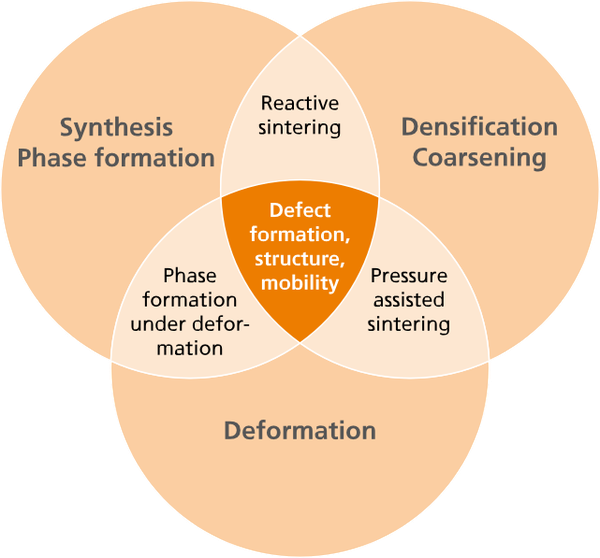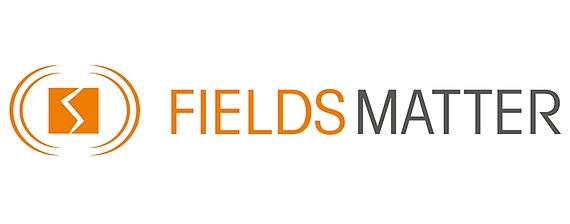Scientific Goals
The objective of the present SPP is to develop a unified description of matter transport activated in inorganic solid materials by electric and magnetic fields. One central question of the SPP is therefore: What are the interplays between static electric/magnetic fields as well as (dynamic) electromagnetic fields and defect formation, structure and mobility?
The defects to consider are manifold and include:
- single or clustered point defects (such as intrinsic and extrinsic defect pairs), stacking faults
- single or networks of dislocations,
- interfaces between two reacting solids or crystalline phases (grain boundaries)
- solid/vapour interface (for example at pores)
- oxide layers at the surface of metal particles.
Their properties - in particular their stability and mobility- will determine the response of the whole material and also its processing ability. Our objective is to provide a theoretical basis built on experimental evidence for understanding how atoms, ions, electrons and defects are affected by external fields and for intentionally using electromagnetic energy for materials synthesis and processing. The energy transfer to the material can be large enough to influence the thermodynamics of the system, or perhaps more interestingly it can be used to control its kinetics.
Magnetization/electrical energy is therefore an additional parameter to tailor microstructures, assist and modify established/classical processes, and achieve selective control of diffusion. Field-driven processes can use different, new kinetic pathways leading to the desired final thermodynamic state. But how large does a field need to be to have an impact on the reaction/process? What is the effect of frequency or pulse pattern? Under which conditions are the field effects enhanced? These are questions which urgently need to be answered to progress on a sound basis and not by trial and error.

As shown in the figure, the research will be focused on the following areas:
- Synthesis and phase formation by solid-state reactions and diffusive phase transformations
- Densification of particle-based materials and microstructure coarsening (pore elimination and grain growth)
- Mechanical deformation (plasticity and creep)

